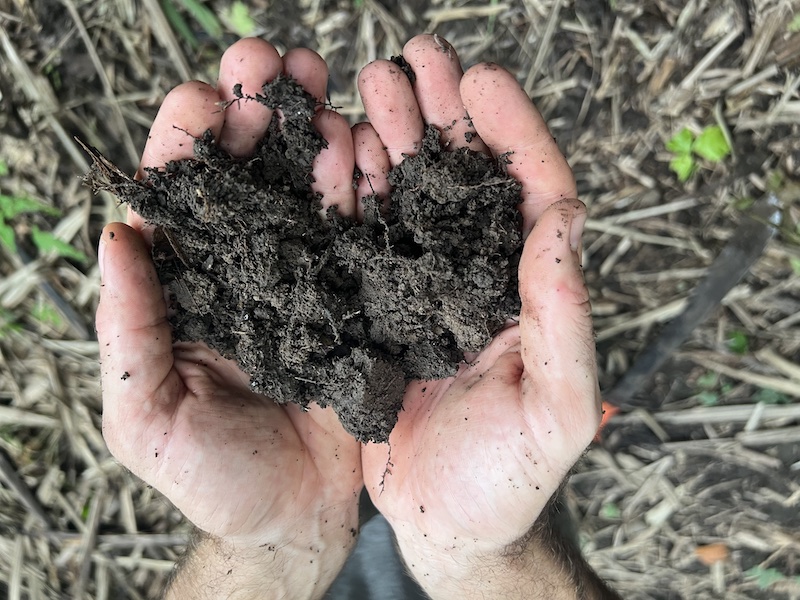
Exhibition time: 17-19 March, 2025 Shanghai, China
 中文
中文

Exhibition time: 17-19 March, 2025 Shanghai, China
 中文
中文

Soil is a significant carbon reservoir, storing more carbon than all plants, animals and the atmosphere combined, making it crucial for addressing the climate crisis.
Microbes, such as bacteria and fungi, are the primary drivers of carbon storage in soil, surpassing other soil processes by a factor of four, according to a new study in Nature.
The efficiency of microbial metabolism plays a vital role in determining the amount of organic carbon stored in soils worldwide, according to the research, which also calls for improved soil carbon models for effective policies and climate solutions.
Enhancing microbial efficiency can lead to increased carbon storage in soils, but further research is needed to understand how to achieve this.
More carbon is stored in the soil than in all plants, animals and the atmosphere combined, making it among the most critical conservation frontiers as we face the climate crisis.
According to a recent study published in the journal Nature, microbes are the key drivers behind carbon storage in soil, surpassing other soil processes by a factor of four.
“We know that microbes are important for soil health,” Steven Allison, a professor in Earth System Science at the University of California, Irvine, who was not involved in this study, told Mongabay. “But this is really the first paper that establishes this positive link between the efficiency of microbial metabolism and the amount of organic carbon that’s stored in soils around the world.”

Boreal forest covers much of Canada and northern Eurasia and, when undisturbed, act as a major carbon sink. Photo by user peupleloup via WIkimedia Commons (CC 2.0)
When plants and other organisms die, microorganisms (microbes) such as bacteria and fungi release enzymes that break those organisms down into reusable nutrients and smaller carbon compounds. Some of those carbon compounds feed soil organisms, some accumulate in the soil and become attached to particles in the soil, and some are exhaled as carbon dioxide into the atmosphere. When carbon is held in the soil, it can remain stable there for millions of years if undisturbed. This is why soil is such an effective carbon sink.
Because soil acts as this remarkable sink, conservationists and policymakers are paying more attention to the soil as a nature-based solution to climate change. For this reason, a group of researchers wanted to understand more about how soil carbon operates and to improve current models for soil carbon.
The research team compiled data from soil profiles or soil pits and samples worldwide and then used machine learning to unify many different carbon models.
“To make those nature-based carbon solutions with soil more reliable, we need models to use data to improve their accuracy,” Yiqi Luo, professor at Cornell University’s College of Agriculture and Life Sciences and the paper’s senior author, told Mongabay. “Machine learning and data assimilation are ways to improve those models and are a key factor towards making effective policies.”
When carbon is used for growth, microbes incorporate it into their cells and eventually into the soil, leading to belowground carbon storage. On the other hand, when carbon is used for metabolism, much of it is released as a byproduct in the form of carbon dioxide into the atmosphere, contributing to greenhouse gas emissions. They examined the amount of carbon used by microbes for their growth compared with the amount used for metabolic processes, a value known as the carbon use efficiency (CUE), in addition to several other soil processes such as decomposition.
“This work reveals that microbial carbon use efficiency is more important than any other factor in determining soil carbon storage,” Luo said.

Approximately 75% of all land carbon is stored in the soil. The better we understand what is happening underground the better we can utilize soils to combat escalating carbon emissions and climate change. Photo by Liz Kimbrough.
“You might expect the amount of plant growth in the ecosystem would determine the soil carbon … and actually a lot of our large climate models at the global scale assume that’s the case,” Allison said, “but [this study] found that this microbial efficiency variable was most important compared to all the other environmental variables, by a pretty large margin.”
“The main point of the paper is that as microbes become more efficient in their use of their carbon or food sources, that’s resulting in higher carbon storage in the soil,” Allison said.
Luo and Allison both said this study is important because it tells us that if we could make microbes more efficient, that would help store more carbon in soils.
The question is, how do we make microbes more efficient?
“We don’t really know what’s causing that higher growth efficiency. … Providing more nutrients to plants can help their growth and carbon storage,” said Allison, “so it could be something as simple as providing the right amount of nutrition.”
Soil with a good structure and moderate variation in its physical properties can create a favorable environment for different soil microorganisms to coexist and work together. This is achieved in mature, biodiverse ecosystems but also in some agroforestry landscapes.
“Ultimately, we still don’t know what’s ultimately responsible for those changes in the efficiency of microbes. And that’s still an area of active research,” Allison said. “But it gives us a target or some aspect of the microbiome’s physiology that we might try to engineer or manipulate in some way…That could be promising for storing more carbon.”
Source from: Mongabay